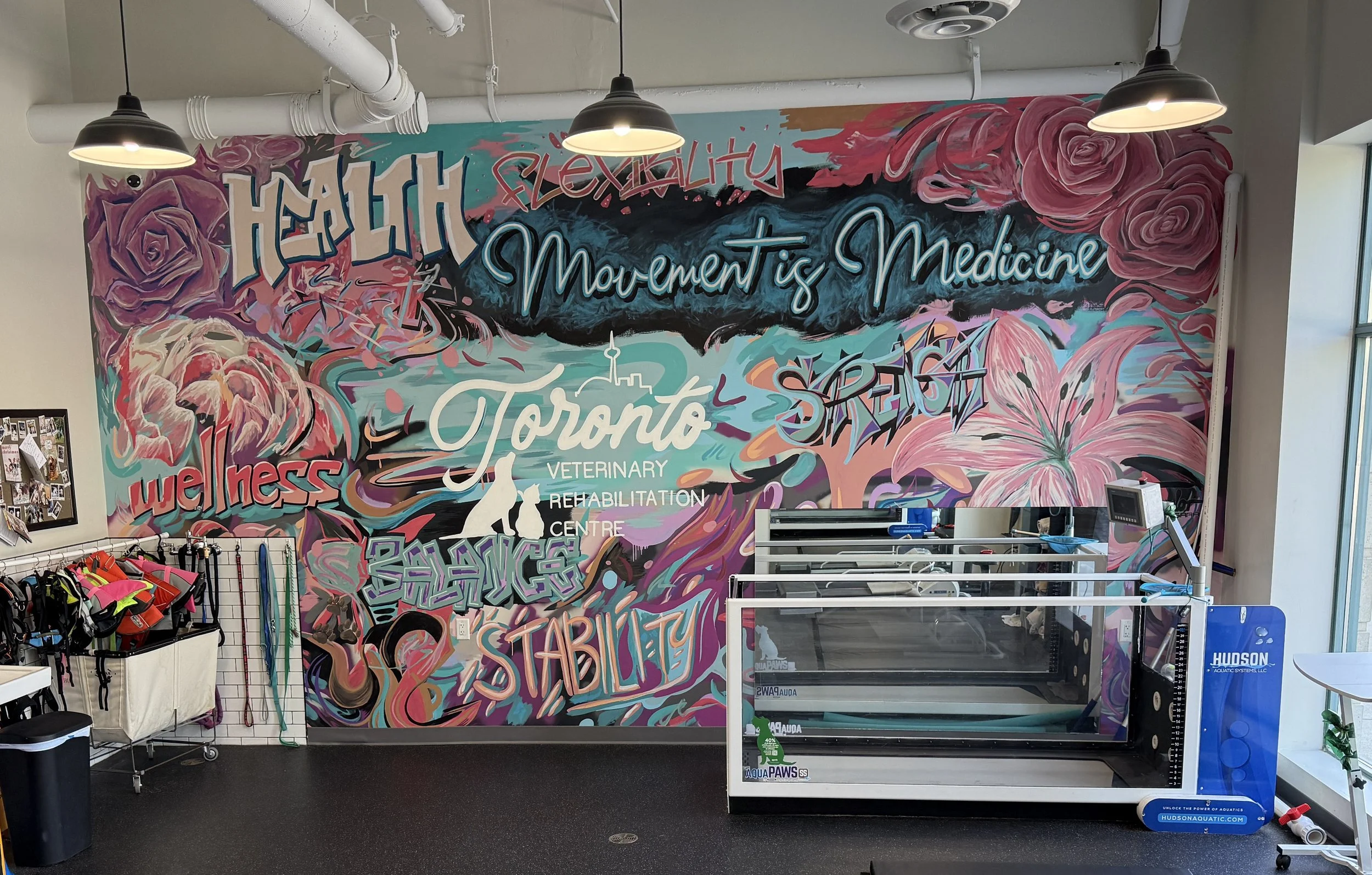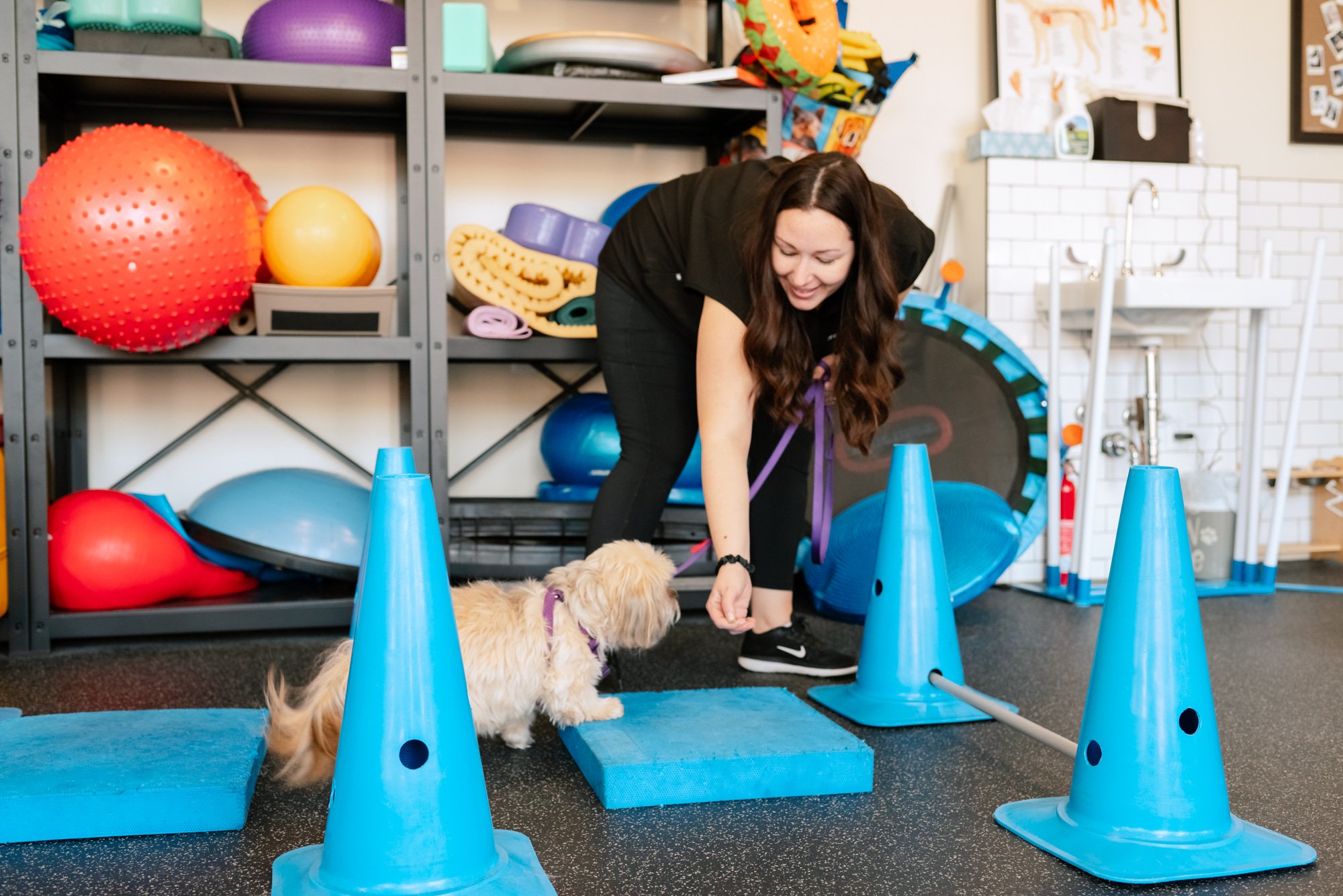Healing in Motion: Why Post-Operative Rehabilitation Is Essential After Orthopedic Surgery in Dogs
When your dog undergoes orthopedic surgery—whether for a torn cruciate ligament (TPLO), correction of a medial patella luxation (MPL), or a femoral head ostectomy (FHO)—you breathe a sigh of relief when the operation is over. But what many caregivers don't realize is that surgery is only the beginning of your dog’s healing journey.
Orthopedic surgeries address the mechanical issue—the torn ligament, the unstable joint, the malformed bone. But without a structured rehabilitation plan, your dog may struggle with pain, muscle loss, uneven movement, and even new injuries from compensation. Rehabilitation is the bridge between surgical success and full functional recovery. It is what turns “healing” into “thriving.”
So what does post-operative rehabilitation really look like? How can it support your dog’s recovery? And what role do you play in the process?
Let’s take a deeper look at the path to healing through movement, or as we like to say, “Movement is Medicine”.
The First Weeks: When Movement Matters Most
The first two weeks after surgery are often the most stressful—for both dogs and their humans. Your dog may be tired, sore, groggy from medications, or unwilling to bear weight on the operated limb. They may not understand why they are being confined or kept from the activities they love.
But this is also when rehabilitation should begin—safely and in a controlled way.
Although we often don’t start a formal in-clinic rehab program until 2 weeks post-surgery, there are several things that you can start to do at home in the first couple of weeks to help accelerate your dog’s recovery time.
Pain Management: The most important thing that you can do to improve your dog’s comfort and mobility after surgery is to give them their pain medications as prescribed. Even if your dog appears to be feeling better, do not skip doses; and if you think that your dog is still uncomfortable at the end of their course of anti-inflammatories, ask for more. Appropriate pain management is an integral part to the early stages of your pet’s recovery.
Mobility Support: While we do want to restrict access to stairs, furniture, or other areas where jumping or running could occur, we don’t want to limit your dog’s mobility entirely. Short, leashed walks help prevent joint stiffness and muscle atrophy. Use sling support or a Help Em Up harness under the dog’s belly to minimize unnecessary strain on joints.
Home rehabilitation: Early rehab at home encourages your dog to use the surgical limb again in a safe, controlled environment, which is key to avoiding long-term disuse. Heat and cold therapy, passive range of motion and massage can all be done safely in the first couple of weeks to help minimize swelling, improve comfort and decrease stiffness, to ensure that when your dog is ready to start a formal rehab program, they are already ahead of the game. Check out our guide on caring for your dog in the first two weeks after orthopedic surgery for more information.
In other words, the goal isn’t to push movement too soon—but to prevent too much stillness from becoming a problem.
Week-by-Week Progress: What to Expect During Recovery
Every dog recovers on a slightly different timeline. Age, body condition, the type of surgery, and the presence of pre-existing arthritis or other health issues all influence the pace. That being said, here is a general overview of how rehab often progresses following orthopedic surgery:
Weeks 1–2: Foundational Healing
Strict rest with supervised potty breaks
Pain management (anti-inflammatories, ice and heat therapy)
Passive movement and soft tissue massage
Short (5 minute) support walks
Weeks 3–4: Controlled Mobility
Short, supported walks increase in duration
Underwater treadmill may be introduced (reduces joint load while encouraging active limb use)
Early weight shifting, balance and proprioception exercises
Close monitoring for signs of discomfort, fatigue, or regression
Weeks 5–8: Strength and Coordination
Progressive exercises to rebuild muscle tone and endurance
Neuromuscular training to improve joint stability and control
Core strengthening and flexibility training
Weeks 9–12+: Return to Function
Jogging, stairs, and off-leash play reintroduced based on goals and previous level of activity
Final strength, range of motion and flexibility goals evaluated
Return to normal activity or sport may begin based on progress
At-home program established for long-term maintenance
At every stage, rehabilitation helps to reduce the risk of re-injury, catch early signs of problems, and adjust the plan to suit your dog’s comfort and ability.
Not All Surgeries Are the Same: Why Custom Plans Matter
It is important to understand that rehab isn’t one-size-fits-all—even among dogs with the same surgery.
One dog recovering from TPLO surgery may be walking almost normally within 3-4 weeks, while another may continue to struggle with muscle asymmetry and overloading the opposite limb for several weeks.
That is why a skilled rehabilitation team doesn’t just follow a generic checklist or cookie cutter plan. They assess:
Gait quality and limb loading
Joint range of motion
Muscle balance and compensatory patterns
Pain levels and behavioural changes
Progress against expected timelines
Your dog’s rehab plan should reflect their unique surgery, history, and temperament.
What About Prehab? Preparing Dogs for Surgery
Another underused but powerful concept is “prehab”—rehabilitation that happens before surgery.
Just like athletes train for a marathon or knee replacement patients strengthen their quads ahead of surgery, dogs can benefit from targeted therapy before their procedure. Prehab can help:
Preserve muscle mass
Improve joint mobility
Reduce inflammation
Create a smoother emotional transition post-op
Dogs who undergo prehab often recover faster, need fewer pain medications, and re-engage the surgical limb sooner.
What If Recovery Doesn’t Go As Planned?
Sometimes, despite best efforts, dogs hit a plateau or show signs of regression. This doesn’t mean you’ve failed—it means it is time to reassess.
Common signs of a recovery plateau or regression include:
Limping that worsens or doesn’t improve
Reluctance to walk, play, or bear weight
Muscle wasting on the surgical leg
Behaviour changes (withdrawal, anxiety, aggression)
Licking or guarding the surgical site
Your rehab team will revisit your dog’s plan, pain management, and activity levels to determine the cause. Often, a few adjustments—such as modifying home exercises, changing modalities, or revisiting diagnostics—can help your dog move forward again.
The Power of a Team-Based Approach
One of the most valuable parts of a post-op rehab plan is the collaborative team behind it.
Your surgeon ensures the mechanical repair was successful
The rehab veterinarian monitors pain, healing and adjusts your dog’s plan as needed
Rehabilitation practitioners and rehab assistants deliver therapies, guide exercises, and support your dog (and you!) throughout their recovery
You, the caregiver, provide consistency, encouragement, and observations that inform our care
Together, we form a circle of support that carries your dog from discomfort to confidence. It is not just about physical healing—it is about trust, safety, and joy returning to your dog’s life.
From Surgery to Strength: What Comes Next
The goal of orthopedic surgery isn’t just to fix a joint—it is to return your dog to the life they had prior to their injury. Bones and soft tissues only tell part of the story. The way your dog moves, plays, climbs stairs, jumps into the car, and greets you at the door—that is where rehabilitation makes the biggest difference.
With expert guidance, structured therapy, and a little patience, your dog can recover not just well—but better than ever.
If your dog has recently had surgery, or one is planned in the near future, don’t wait. Book a consultation with your rehab team to create a post-op plan tailored to your dog’s needs.
Movement is Medicine.



